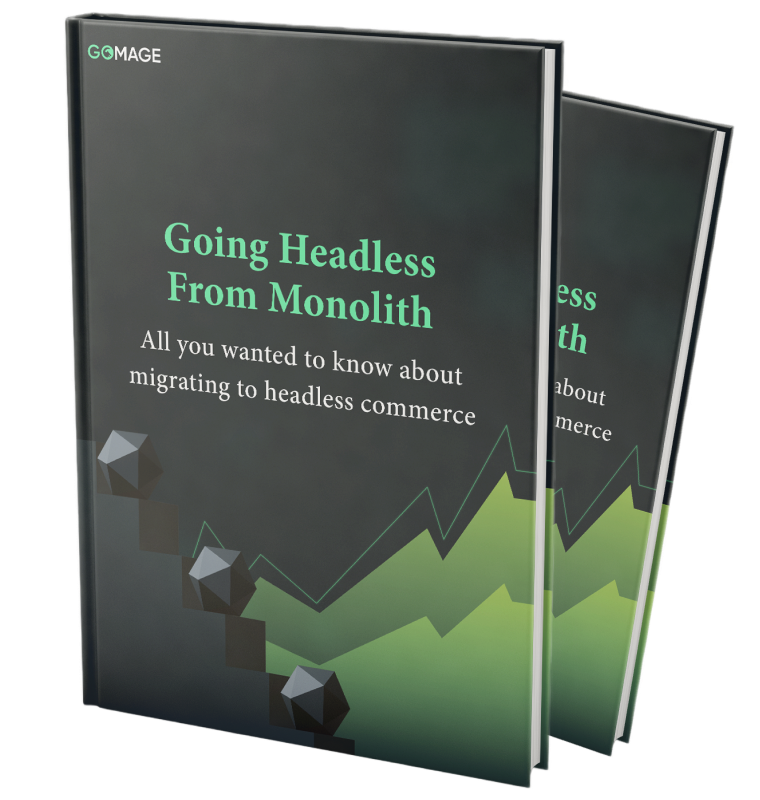Remember how we all rushed back to offline shopping after enduring lengthy lockdowns during the COVID-19 era? It's rather amusing how we initially celebrated the convenience of online shopping, only to eagerly return to brick-and-mortar stores as soon as they reopened.
But this doesn’t mean that online shopping has lost its allure. Its unmatched convenience continues to drive its growth, with new online stores cropping up daily. At the same time, the industry sees the emergence of fresh trends that are crucial to embrace in order to remain competitive. Let’s explore these evolving eCommerce trends in today’s article.
#1 Artificial Intelligence
According to Statista, the global AI in the retail market is projected to reach $23.91 billion by 2027. Whether you’re a fan or not, AI has firmly established its presence and permanence. It has long served as a valuable asset for eCommerce enterprises, but in 2023, it catapulted into the mainstream spotlight with generative AI, showcasing its remarkable capabilities.
AI can be a powerful tool that helps online retailers to:
- Personalize the shopping experience. AI analyzes customer data to offer tailored product recommendations, enhancing engagement and satisfaction.
- Optimize inventory management. By forecasting demand and identifying trends, AI helps retailers optimize stock levels, reducing overstock and stockouts.
- Streamline customer service. AI-powered chatbots provide instant assistance, answering queries, resolving issues, and guiding customers through their purchasing journey 24/7.
- Enhance marketing campaigns. AI analyzes customer behavior and preferences to create targeted marketing campaigns, increasing conversion rates and ROI.
- Improve fraud detection. AI algorithms detect suspicious patterns in transactions, helping retailers prevent fraudulent activities and safeguard financial transactions.
- Enable visual search. AI-powered image recognition technology allows customers to search for products using images, simplifying the shopping process and boosting user experience.
- Automate pricing strategies. AI algorithms analyze market dynamics, competitor pricing, and customer behavior to dynamically adjust prices for maximum profitability and competitiveness.
#2 Voice Search Optimization
People like buying things on the go. And they want to search for a new pair of jeans or a groceries hands-free. Magic? No, just efficient voice search optimization.
More than half of Americans use voice search for shopping. That’s a huge number of potential sales, so it’s crucial to adapt to this trend. Voice search optimization ensures that your products are easily discoverable when consumers speak their queries, whether they’re browsing on their smartphones, smart speakers, or other voice-enabled devices.
The benefits of voice search for shoppers are quite obvious. However, let’s single them out:
- Voice search offers a hands-free browsing experience, perfect for multitasking situations like driving or cooking, enabling faster access to information.
- Individuals with disabilities find voice search accessible, overcoming challenges associated with typing or using a mouse.
- Continual advancements in voice recognition technology ensure increasing accuracy, although speaking clearly and in a quiet environment is advisable for optimal results.
And here’s how online retailers can capitalize on those benefits:
- Leveraging voice search drives heightened engagement, leading to improved sales as it facilitates impromptu purchases through conversational commerce.
- Quick, impulsive transactions prompted by voice search minimize cart abandonment rates compared to regular browsing, providing immediate assistance in product discovery and purchase completion.
- Access to consumer data through voice search insights enables retailers to offer tailored recommendations and targeted marketing campaigns, understanding customers’ preferences and intent behind conversational queries, leading to higher conversion rates and long-term customer satisfaction.
#3 Personalization in eCommerce
Remember that “Share a Coke” thing Coca-Cola did in 2011? They basically swapped out their usual logo on bottles and cans with people’s names. It was all about getting folks to find and share a Coke with their name or a friend’s name. Pretty cool and so simple? It made the whole experience feel more personal and brought people together.
Okay, one more example. How do you feel when you walk into a cozy café, and the barista greets you by name, already preparing your favorite drink before you even place your order? This warm and personalized welcome creates a sense of connection and belonging, making you feel valued as a customer. Just like this café experience, personalization in eCommerce transforms the shopping journey, tailoring it to individual preferences and needs.
Take a look at these statistics:
Shocking, isn’t it? With these statistics, you can see you can’t neglect personalization. Let’s take a look at some possible ways to adopt this eCommerce trend:
- Product recommendations – Utilizing algorithms to suggest products based on past purchases, browsing behavior, and demographic data.
- Personalized messaging – Crafting emails, notifications, and on-site messages that resonate with the recipient’s interests and preferences.
- Upsells & cross-sells – Recommending complementary or higher-value products during the checkout process or on product pages.
- Abandonment campaigns – Sending targeted messages to customers who have abandoned their carts, reminding them of their items and encouraging them to complete the purchase.
- Omnichannel marketing – Providing a seamless shopping experience across various channels, including website, mobile app, social media, and physical stores.
- Location-based targeting – Delivering personalized content and promotions based on the customer’s geographic location or proximity to physical stores.
- Remarketing campaigns – Displaying ads to users who have previously visited your website or interacted with your brand, encouraging them to return and make a purchase.
- Website personalization – Customizing the website experience for each visitor based on their behavior, preferences, and past interactions.
- Promotions & discounts – Offering exclusive deals and discounts tailored to specific customer segments or individual preferences.
- Content suggestions – Recommending blog posts, videos, or other content based on the customer’s interests and browsing history.
#4 Mobile Commerce
Remember back in 2010 or so when mobile-optimized websites were all the rage? Crazy how far we’ve come since then, right? Now, it’s all about mobile commerce, and it’s only getting bigger. We’ve shifted from just making desktop sites work on phones to actually designing mobile-first sites.
It’s pretty clear now that mobile commerce rules the roost! Consumers are showing more and more signs of willingness to shop right from their mobile devices. To meet this demand, online retailers need to offer experiences tailor-made for mobile:
- Implement fingerprint and facial recognition technology for simplified login and checkout processes.
- Create a specialized mobile application with eCommerce functionalities optimized for smaller screens.
- Provide mobile-compatible payment methods (such as Google Pay/Apple Pay) to enhance the checkout experience.
#5 Headless Commerce
Headless commerce represents the latest trend in online retail, where the front-end presentation of a store is decoupled from its back-end operations. If you want to learn more about how it works, read our article.
A key advantage of headless commerce lies in its enhanced capacity to refine and optimize customers’ interactions with your website. Unlike traditional systems, which struggle to accommodate the browsing habits of modern consumers – constantly switching between devices, pages, and touchpoints within a single session – headless solutions excel at delivering consistent experiences across various channels. Additionally, this approach facilitates more personalized shopping experiences, automatically presenting customers with relevant deals, promotions, and recommendations based on their unique purchase history.
Also, headless commerce solutions provide unparalleled performance. The segregation of the front-end layer from the back-end one reduces the processing burden on the server, enabling it to focus solely on data retrieval. Consequently, when a user requests a page, only essential data is transmitted, and a lightweight front-end framework efficiently handles the rendering process, resulting in faster loading times. Furthermore, the integration of content delivery networks (CDNs) optimizes performance by caching frequently accessed assets closer to the user, further enhancing overall site speed.
Considering headless as an option? Our guide is all you need to make a final decision.

The Final Word
Well, staying abreast of eCommerce trends is essential for remaining competitive. But it’s also really important to be careful about which trends you jump on board with. While embracing innovation can lead to significant advantages, it’s crucial to choose strategies and technologies that align with your business objectives and target audience.
Blindly following trends can be risky for businesses. It might lead to investing time and resources in strategies or technologies that don’t actually benefit your specific business model or customers. Plus, rushing into trends without proper evaluation can divert focus from core objectives and result in missed opportunities for more tailored, effective approaches. It’s crucial to assess each trend critically and consider its potential impact on your business before diving in.
By striking a balance between awareness and prudent selection, businesses can effectively leverage eCommerce trends to drive growth and maintain a competitive edge in the market.









